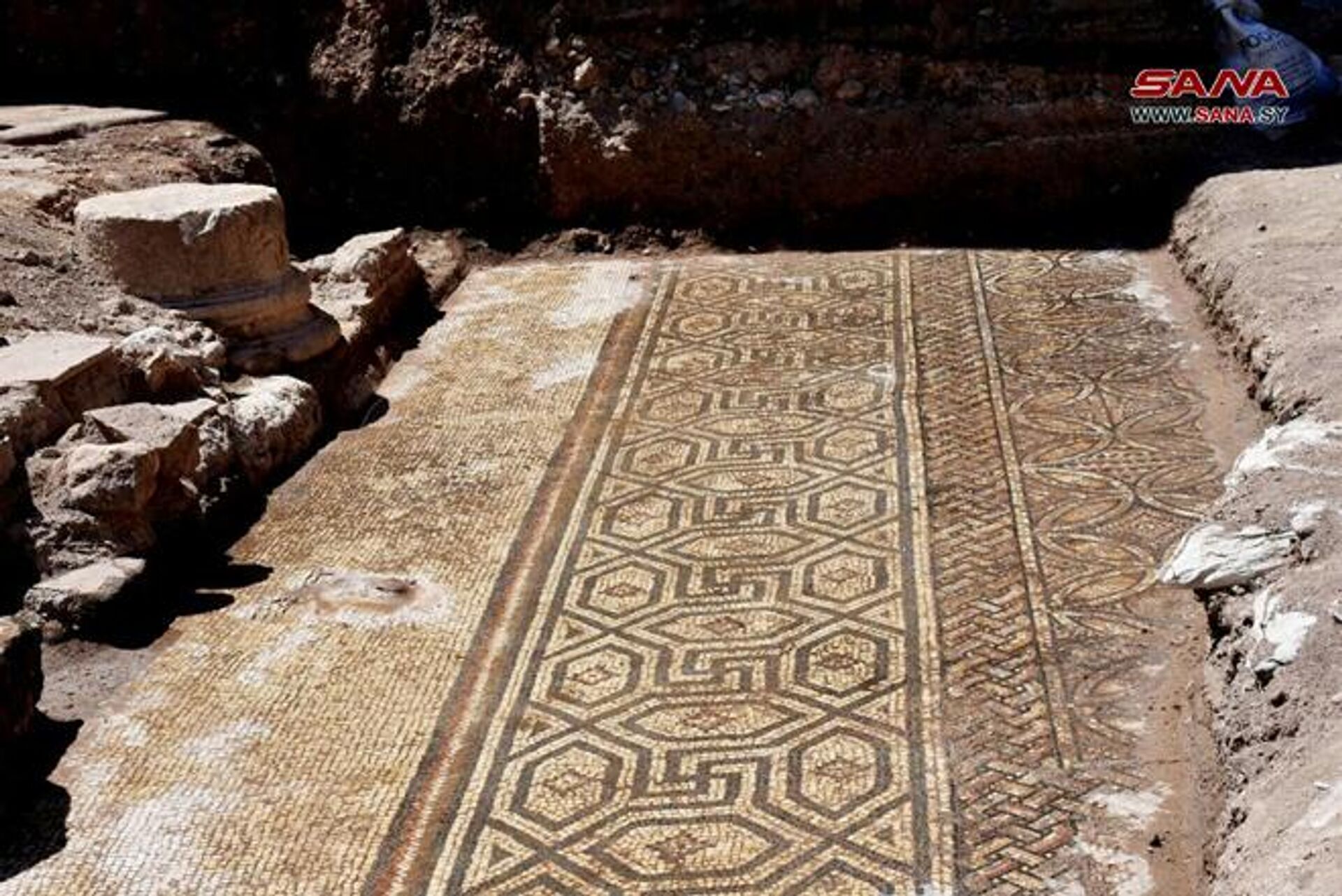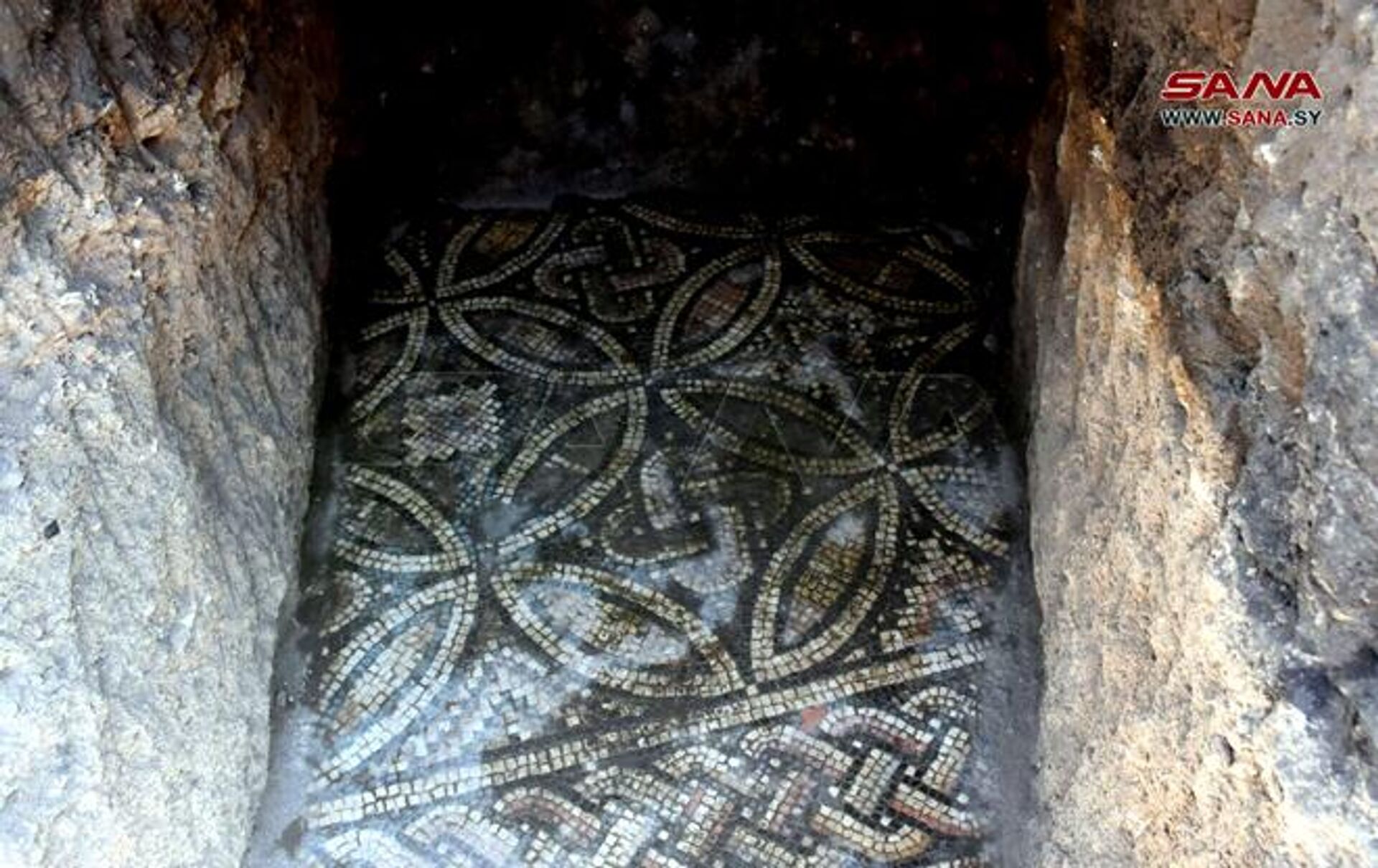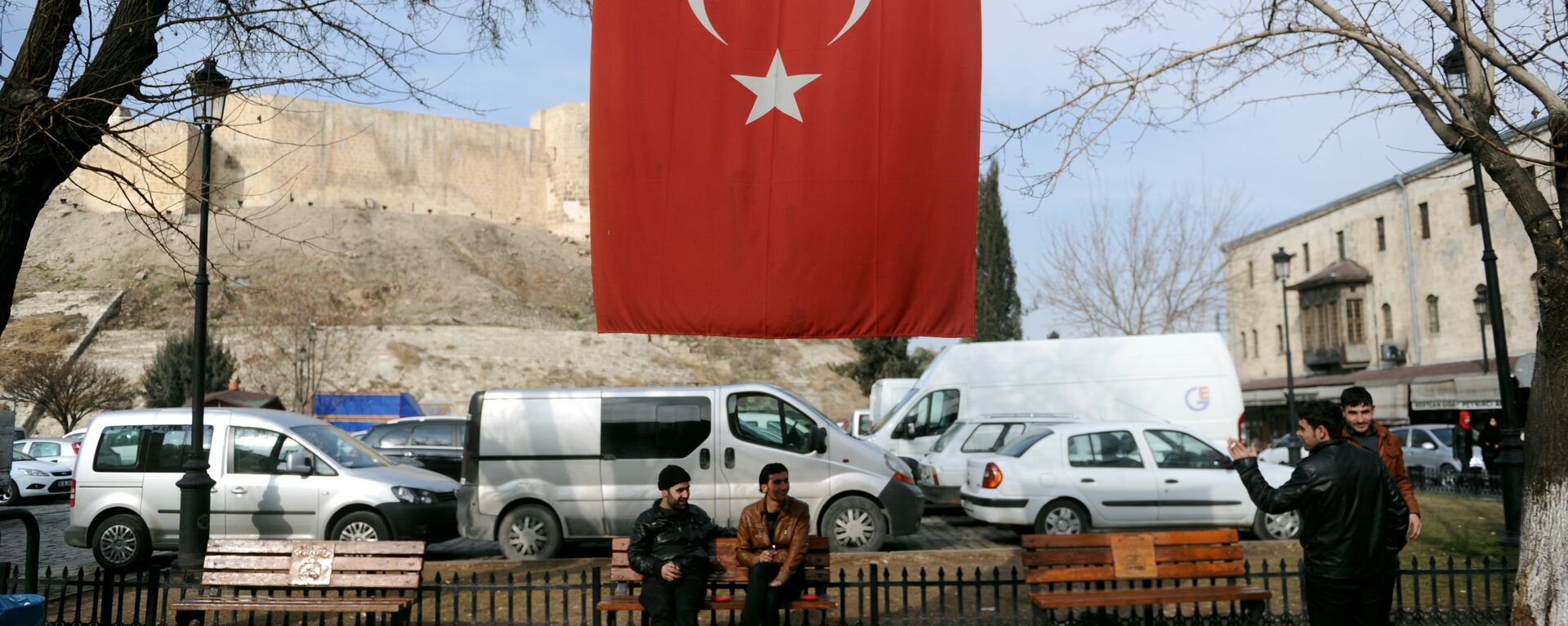Third Stunning Roman Mosaic Unearthed at Syria’s Al-Rastan Archaeological Site

© SANA
Subscribe
Another mosaic scene has been discovered at al-Rastan, an ancient city dating to Greek Macedonian rule, alongside several other mosaics.
Muhammad Nazir Awad, Syria’s director general of Antiquities and Museums, told reporters on Thursday that the newly discovered mosaic depicts a third scene from "The Iliad," an epic poem about the Trojan War by the ancient Greek writer Homer.
The new mosaic depicts the “War of the Centaurs” and sits alongside mosaics of the “War of the Amazons” and “Poseidon, God of the Sea.”
"It's an exceptional discovery in terms of the depicted topics included in the Homer Iliad such as the God of the Sea, Poseidon, and the Amazon wars as well as the Battle of the Centaurs, which we have uncovered now. This is what makes this discovery important on the local and international levels," Awad said.
The mosaics were first discovered on a floor last October and cover some 300 square meters. They are made of multicolored shards of glass embedded in intricate patterns, as well as the depictions of the famous mythical scenes.
According to the Syrian Ministry of Culture, they date to the 4th Century CE, when Syria was under Byzantine Christian rule.
In its prime, Al-Rastan was called Arethusa and was a wealthy, well-defended city guarding a crossing of the Orontes (Asi) River between Homs and Hama Governorates. After being destroyed in 634 CE during the Muslim conquest of the Levant, the city recovered but declined in importance. Today, it is a city of roughly 40,000 nestled in the farmland of Syria’s fertile Asi River basin.
Awad said he expects such discoveries to be economically and culturally beneficial for the regions around them as they become tourist destinations.
"The concept in heritage management in Syria today is to make these discoveries one of the economic, social, and development levers and (promote) sustainable development for the people here in this area," he said.
"We think that in the future it will be an important visiting point that is no less important than archaeological sites most visited in Syria, including the ancient cities of Palmyra and Apamea, and other places."
At Palmyra, one of Syria’s six UNESCO world heritage sites, restoration efforts are continuing at an extremely slow pace after parts of the archaeological site were deliberately destroyed by Daesh* during the Syrian Civil War.
The oasis was once a major metropolitan center and the capital of Septimia Zenobia’s empire during the Third Century CE before being annihilated by the Romans in retaliation for Zenobia’s rebellion. The Islamic terrorist group laid landmines that have to be removed, and security issues remain.
“There is a big lack of funding so far, for all the sites in Syria,” Youmna Tabet, program specialist at the Arab states unit of UNESCO’s World Heritage Center, told US media earlier this month.
US sanctions aimed at forcing Syrian President Bashar al-Assad from power ostensibly exempt activities related to preservation and protection of cultural heritage sites, but in practice they still frustrate such efforts, especially with bans on exporting US-made items to Syria.
In addition to the civil war, the February 4 earthquake on the Turkish-Syrian border, the region’s most destructive ever recorded, also heavily damaged many archaeological sites. However, Al-Rastan escaped damage.
*Daesh (also known as ISIS/ISIL/IS) is a terrorist organisation outlawed in Russia and many other states




